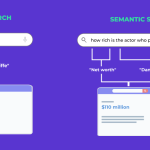Table Of Content
Did it take you back to your school days? We know that hearing the term “periodic table” gave many of you a flashback to your chemistry class.
However, the SEO periodic table is somewhat different.
Well, the SEO periodic table is a graphical representation of factors, best practices, and mistakes related to SEO.
When it was launched by Search Engine Land in 2011, it became very popular. Fast forward to today, it is still popular.
But, the problem lies in understanding, especially for beginners.
As a matter of fact, those who have already touched on this topic have not clarified it properly. Confusion is still there!
With that in mind, BloggerOutreach comes to the rescue. In this article, we are going to explain the SEO periodic table in layman’s terms.
So, don’t go anywhere. Let’s begin.
Table Of Contents
1. What is SEO Periodic Table
2. Who is this SEO periodic table for?
3. The anatomy of the SEO periodic table:
4. How do you utilize the SEO period table for better results?
What Is The SEO Periodic Table In 2024?
The 7th Version of the Periodic table of SEO elements is here. In simple terms, the SEO periodic table visually represents the key components and factors contributing to search engine optimization.

Again, each element is segregated into…
The element symbol is quite like the periodic table in chemistry.
Next, the name of the element.
Finally, the category, for example – content, architecture, etc.
It provides a comprehensive overview of the various components that impact a website’s visibility and ranking. Thus, making it easier for beginners to understand and implement effective SEO strategies.
Just like the periodic table in chemistry categorizes and organizes elements into groups and periods…
…the SEO periodic table does the same for SEO factors.
The SEO periodic table is grouped into 7 elements, such as:
- Credibility
- Content
- User
- Code
- Links
- Performance
- Architecture
Who Is This SEO Periodic Table For?
Short answer: beginners.
But the long answer:
The SEO Periodic Table is a helpful guide for those into SEO or running websites. It breaks down SEO factors like on-page stuff, off-page elements, technical bits, content tweaks, and more. This guide simplifies SEO and aids in boosting site visibility on search engines.
The Anatomy Of SEO Periodic Table
Primarily, the table consists of 6 core elements (key essentials of SEO), toxins (harmful practices), and niches.
Want to know in detail?
Let’s start.
The Element Groups
The updated SEO periodic table has seven elements. Then, each element is divided into other factors.
(i) Credibility
Credibility is the foundation of the SEO periodic table.
Google uses E-E-A-T to gauge the credibility of a source: Experience, Expertise, Authoritativeness, and Trust.
For example, let’s consider you as a physics teacher with 20 years of experience and write a blog in that field, you show your expertise and experience. As you become popular, people begin to trust you. This is a great example of meeting the criteria of E-E-A-T.
Another important factor that falls under credibility is brand. What does the SEO periodic table mean by brand? It’s how people perceive you.
Finally, the criteria for the “creator” closely align with all elements of E-E-A-T. Google wants to ensure that the content they display to users is from reputable and trustworthy sources.
(ii) Content
The first key element of the SEO period table is content. They grouped content into 7 factors:
- An – Answer: If you are a regular reader, you know that in every article, we vouch for addressing search intent properly.
- Au – Accuracy: Rather than just clickbait, offer genuine solutions through your content. Plus, ensure they are factually accurate as well.
- Cn – Consensus: Some niches demand your content to be in line with the high-quality resources in the industry.
- L – Language: Your content delivery and communication should match your target audience. So, if you are writing for a UK audience, your content must align with that.
- Qu – Quality: Quality is the key to any successful content; as they say, “content is king”. So, ensure that quality content is pivotal in SEO.
- R – Relevance: Delight your audience with the content. So, ensure that after reading your article, they will not search for the same topic again.
- V – Value: Write for readers, not for the search engine. So, write super helpful content that solves a problem.
- Dt – Depth: Go deep into the topic. Because thorough, in-depth content always wins in the search results. So, STOP writing content for the sake of doing it. Instead, think as if you’re solving a problem through content.
- Mm – Multimedia: Next comes visual representation. When you incorporate images, videos, and creatives, people are more likely to engage with your content.
- Kw – Keywords: Add your focus keywords properly in your content so that you can attract a targeted audience
- Fr – Freshness: Write on fresh topics. Also, create unique and original content. Again, continuously improve your existing assets and make it better.
- U – Uniqueness: It’s all about standing out with your content. So, add a unique perspective to the content.
(iii) User
Google has repeatedly said – to write for users, not for search engines. And this is not a narrative, it’s something that they truly believe.
As the name suggests, the user group of the SEO periodic table focuses on the audience. The message is loud and clear – offer genuine help to users.
With that, they have segregated this group into – Accessible, Intent, Interactions, Locality, Satisfaction, and Task completion.
To break with, make your content accessible to all with the right intent. Interact with your users. Tailor your content for the specific locality where your target audience resides.
Ultimately, satisfy your audience and let them achieve their goals.
(iv) Code
The core group of the SEO periodic table deals with the backend things. They are crucial in improving the user experience. Also, aids the crawler bots to understand your content.
Firstly, create an SEO-optimized title that includes the primary keyword. Also, ensure that your meta description is compelling and summarizes the content of the entire page.
It’s important to use proper headings and subheadings when creating content. This allows both users and algorithms to easily understand and navigate through your content.
Similarly, add alt tags to your images.
Lastly, use structured data to better organize your content.
(v) Links
Links are still a ranking signal. This is why the SEO periodic table has a specific group called links.
They focused on three types of links – inbound links, external links, and internal links.
Inbound links are your backlinks. When you get links from authority sites, Google considers you as a credible source. Then it helps you climb up the search engine ladder.
Again, through internal links, you create a seamless navigation between your pages and guide the user to find the most helpful resources.
Furthermore, though outbound links, cite resources that you think are most apt and helpful for the user. They are the icing on the cake when it comes to user experience.
(vi) Performance
Now, for a moment, let’s assume that you have applied all the best practices to your pages. But the million-dollar question is – are they performing?
To address this question the SEO periodic table has their last group – performance.
Yes, they are part of technical SEO. And highly effective in boosting overall user experience.
So, ensure that your pages have a fast-loading speed. How responsive are your pages? (i.e. does it take too much time to complete a user interaction?)
Upon page load, minimize content movement such as text, images, and buttons for visual stability.
(vii) Architecture
Why does architecture matter? What exactly did they mean by architecture?
Simply put, search engines are more likely to understand your content if your architecture is better. Now, let’s dig deeper.
C – Crawl: What is the point of producing content that can’t be found by search engines? It’s all about making your website accessible to search engines so that they can understand what’s inside.
Mo – Mobile First: It’s no secret that you must optimize your content for smartphones as most people access the internet through mobile phones.
PS – Page Structure: Both users and search engines should better understand your content. Through structure, you are making your content easier to understand.
Pr – Parity: What is parity? Well, parody is all about offering similar experiences on mobile and desktop. Otherwise, it won’t give a good brand impression.
Ur – URLs: Sprinkle keywords into your links and optimize the URL.
(Using canonical URL tells search engines to prioritize specific pages out of duplicate content.)
Ps- HTTPS: It’s about securing your website so that you can reach your SEO goals efficiently. Additionally, it protects your site from any third-party tampering.
P – Pagination: It’s how you break your pages and make it easier for the user to get the essence of your content.
Ta – Taxonomy: It’s all about structuring your page. The pillar page, subtopics so that you establish your topical authority.
Ca – Canonicalize: Canonicals help the bots to understand duplicate content. By adding a canonical tag, you ask the search engine not to crawl the duplicated version.
And That’s A Wrap
Given these points; it is important to realize the effectiveness of the SEO period table. This information allows marketers and businesses to develop a clear strategy for higher rankings.
So, what do you like the most about this SEO periodic table? If not realized, see here:
- The periodic table layout helps with a full view of essential elements for SEO strategies. In fact, it aids in spotting areas for improvement and taking a complete approach.
- The visual design makes grasping and remembering elements and their connections easier, which is great for visual learners.
- It helps identify SEO trends quickly, like ranking changes or search engine updates, keeping marketers updated.
- The SEO periodic table saves time and effort by putting all the key info in one place, giving marketers a quick overview without needing multiple resources.
That’s it. Make the most of this SEO periodic table and if you need free SEO consultation, reach out to us.
Read Also:









